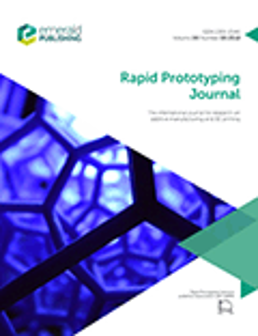|
Autores/as
Gómez-Gras, Giovanni ; Pérez, Marco A. ; Pérez, Marco A. ; Fábregas-Moreno, Jorge; Reyes-Pozo, Guillermo ; Fábregas-Moreno, Jorge; Reyes-Pozo, Guillermo
|
Abstract
Purpose: This paper aims to investigate the quality of printed surfaces and manufacturing tolerances by comparing the cylindrical cavities machined in parts obtained by fused deposition modeling (FDM) with the holes manufactured during the printing process itself. The comparison focuses on the results of roughness and tolerances, intending to obtain practical references when making assemblies. Design/methodology/approach: The experimental approach focuses on the comparison of the results of roughness and tolerances of two manufacturing strategies: geometric volumes with a through-hole and the through-hole machined in volumes that were initially printed without the hole. Throughout the study, both alternates are explained to make appropriate recommendations. Findings: The study shows the best combinations of technological parameters, both machining and three-dimensional printing, which have been decisive for obtaining successful results. These conclusive results allow enunciating recommendations for use in the industrial environment. Originality/value: This paper fulfills an identified need to study the dimensional accuracy of the geometries obtained by additive manufacturing, as no experimental evidence has been found of studies that directly address the problem of the FDM-printed part with geometric and dimensional tolerances and desirable surface quality for assembly.
|

WoS
Scopus
Altmetrics
 
|
|
Publicación
Rapid Prototyping Journal, 17 December 2021, v.27, n.11, p. 1-12
|
